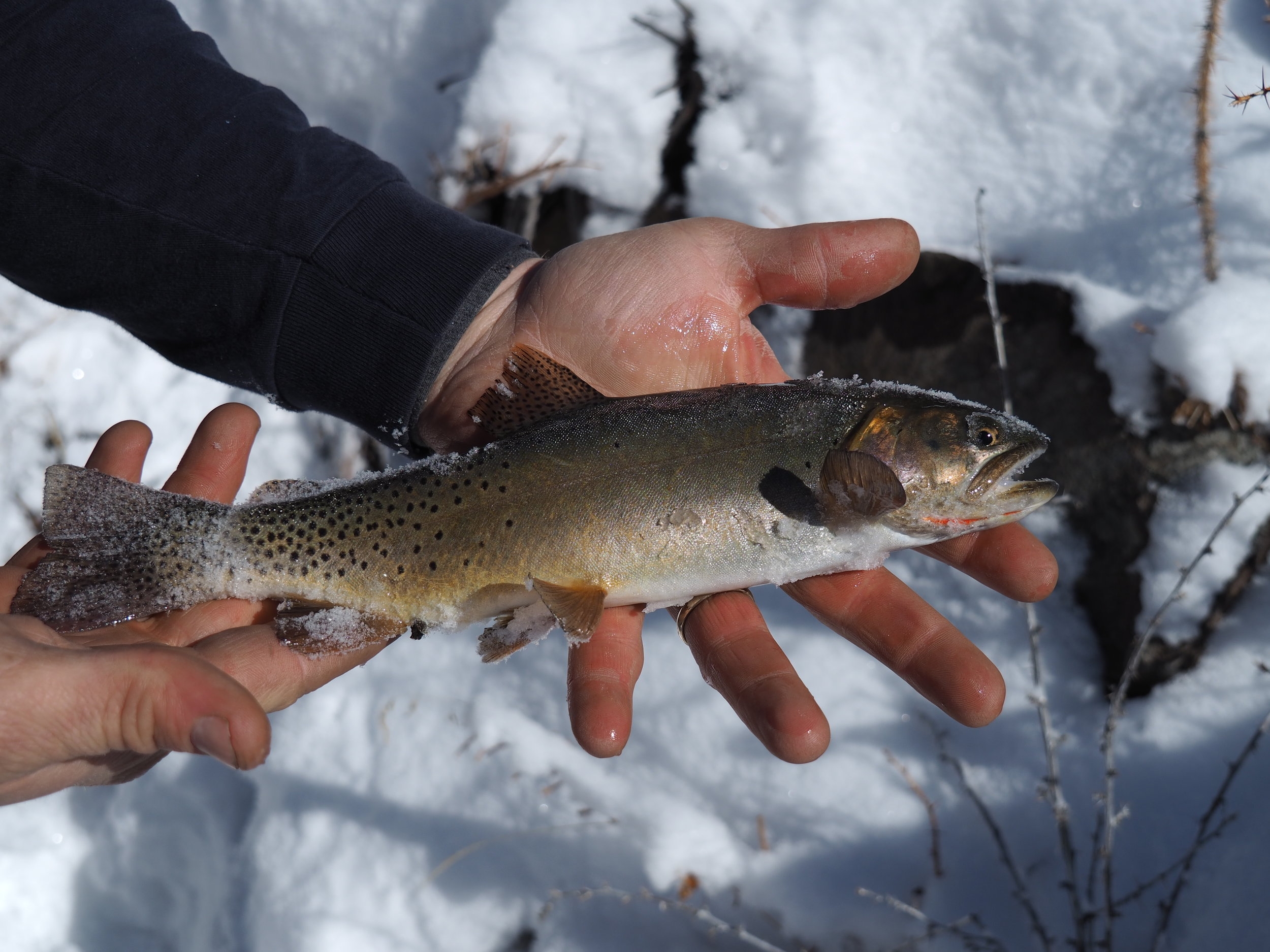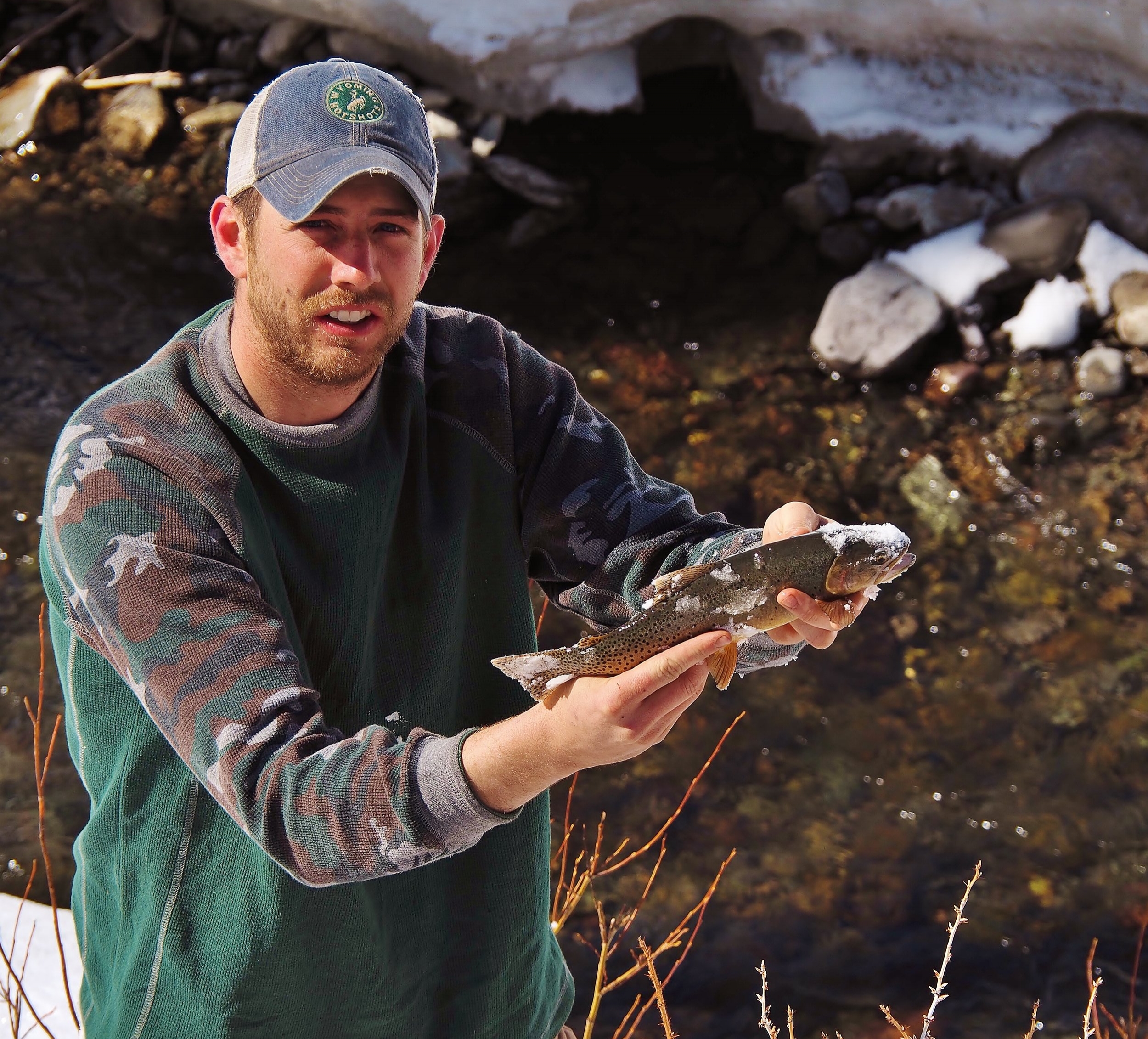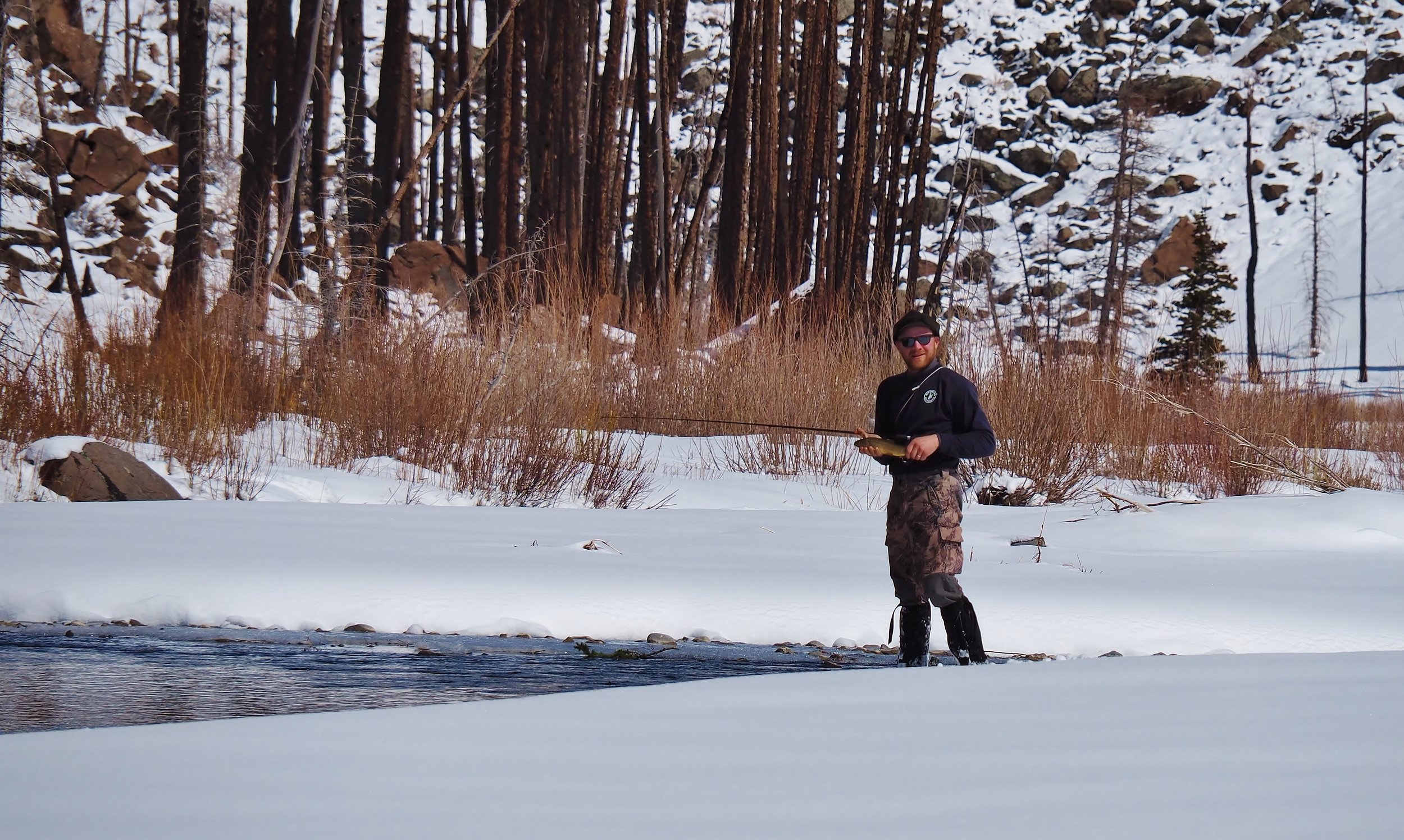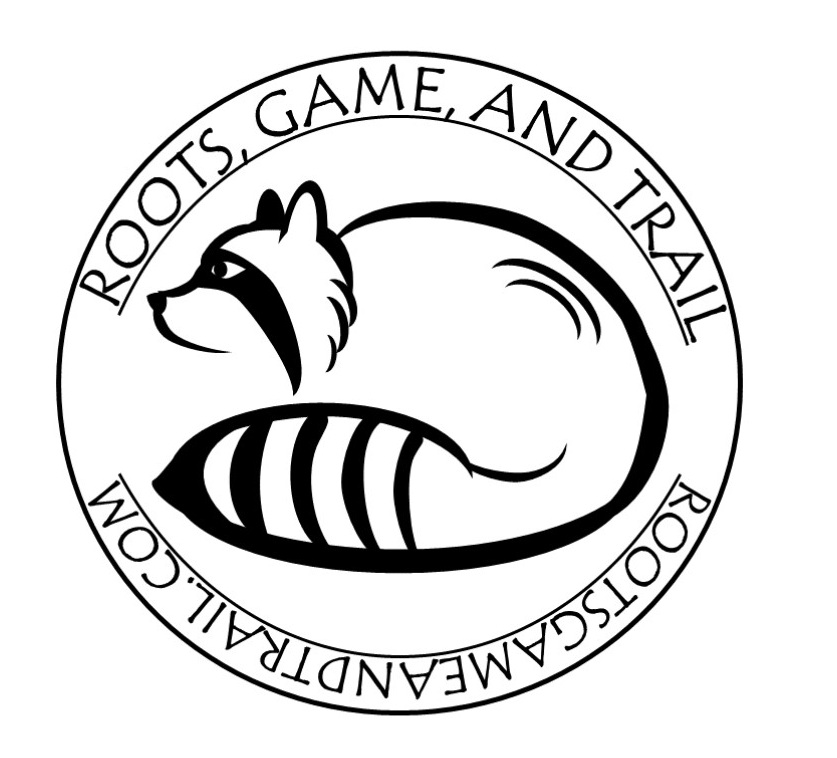Hunting the Elusive Antler: A Search for Treasure in the High Mountains of Wyoming
“This is when you need crampons and an ice axe,” said Steve, as we attempted to climb an ice-covered couloir with at least a 60-degree slope in white-out conditions. Dakota and I agreed as we watched our guinea pig, Steve, scramble up the slope to a safe location. I asked Dakota, “We’re looking for antlers, right?” He responded, “Yeah, but we have to get to where the bulls hangout.” It turned out that getting to the overwintering grounds of the big bulls would be more difficult than we imagined.
The brave souls (Dakota and Steve) making their way to the mouth of an unexpected couloir in the Shoshone National Forest.
My good friend and former college roommate, Dakota, bugged me for several years to go on a spring antler hunting trip with him. This year, I finally had the time and the airline miles to make it happen. Antler hunting, or shed hunting as it’s called sometimes, is a popular pursuit in the western states. Some elk antlers can fetch up to $14 a pound. Serious antler hunters roam from state to state looking for the best spots to collect their quarry. This frenzy for collecting antlers prompted several state wildlife agencies to place seasons on collecting antlers to reduce instances of people harassing the animals before they drop their antlers. Ranchers have also caught onto this craze for antlers. Some ranchers charge up to $10,000 or more to collect antlers on their land.
Dakota and I decided to go the modest route of searching for elk antlers in the Shoshone National Forest, near Yellowstone National Park, where many elk overwinter. Elk in this area typically drop their antlers between January and April with some exceptions. Older bulls drop their antlers earlier in the winter than younger bulls, so timing is everything for collecting larger sets of antlers. Older bulls form “bachelor” groups tend to overwinter at higher elevations on windswept ridges where forage is still accessible. As a man, lover of food and being warm, I don’t understand this strategy. If I were an elk, I’d prefer the tactics of the younger bulls, who stay with hundreds of cows at lower elevations where it’s warmer and forage is plentiful. Then again, the big bulls would likely think I’m nuts for trying to collect their last year’s bone growth for the simple pleasure of bragging rights among my fellow antler hunters.
I flew into Cody Wyoming in early April with the thought of plundering the hillsides of the Shoshone National Forest. I dreamed of open grassy hills near the foot of towering mountains sprinkled with huge sets of matching elk antlers. We planned on camping for two nights. Dakota assured me that we would have as many antlers as we could carry out. Excitement leaked from my seams as I stuffed my backpack with gear. I packed as light as possible – not my typical method for those who know me – in order to make room for the piles of antlers we were about to haul out of the wild.
The next morning, we hopped into Dakota’s truck at 6:00am for an early start. Unbeknownst to me, we picked up another recruit, Steve, to make a crowd. Steve, like Dakota, works for the U.S. Forest Service as a hotshot wildland firefighter. We loaded up Steve’s gear and began our drive deep into the Shoshone National Forest.
We arrived at the trailhead around 9:00am, ready for a full day of hiking. While unloading gear, Dakota asked me if I wanted snowshoes. Knowing that Dakota had hiked into this area only two weeks prior, I asked him what the snow-pack conditions were like. He assured me that the snowshoes likely weren’t necessary. We ditched the snowshoes and began our hike. We didn’t hike up the trail, it was likely that the antlers close to the trail would already be collected. Instead, our expedition went straight up a slope with a grade similar to that of a skyscraper. However, this skyscraper had the possibility of crumbling down to the ground in the form of an avalanche or rockslide. This precarious assent gave me confidence in one of two likely outcomes that would result from this expedition: We would either find loads antlers, or, whichever one of us survived the inevitable avalanche would write a best-selling book on our harrowing quest for antlers.
As it turns out, this was Wyoming’s worst winter in 123 years, something that Dakota forgot to mention to me. As we ascended, we noticed that the snow seemed to get deeper. The sun’s rays, blotted out by falling snow, never reached us. The scene reminded me of the last time I went swimming in a glass of milk. We made our way up the slope, until we encountered a large couloir. We continued trudging through the waste deep snow up the slope until the steepest section turned into a solid sheet of ice. The couloir was our only option for passing through the ominous cliff band that spanned the entire length of the drainage we planned to hike into. Luckily, three hardheaded mountaineers couldn’t be held back by the couloir of death! Dakota and I looked at each other and instantly knew we had to send Steve up the ice luge first. This executive decision was based on Steve’s monkey-like climbing abilities, or maybe, the fact that we didn’t want to go first. With a bit of luck and novice mountaineering experience, we made it to the top without having to change our underwear more than once.
Dakota and Steve contemplating their current life decisions in the “milk”.
Our map and GPS confirmed that we had about six to seven miles to go before reaching “the spot”. However, hundreds, maybe even thousands, of contour lines stood in our way before we could reach antler-filled meadows. The snow deepened as we gained elevation. Snow that was ankle deep quickly became hip deep with no hope of easy walking in sight. At first, we spread out to search more ground, but we quickly formed a single file line so only one of us had to break trail while the other two could take a break. Dakota volunteered to do most of the trail breaking, which Steve and I had no problem with. We trudged up and down drainage after drainage in hopes of finding an antler, or at least a fresh elk track. The deep snow and whiteout conditions seemed to put a damper on our dreams for antler filled packs.
After the seven or eight miles, Dakota, Steve, and I began writing our wills in hopes that someone would find our bodies once spring came. Dakota kept assuring us that, “The spot is just over the next ridge.” But dozens of drainages later, we were still just one more drainage away. Suddenly, the snow tapered and the clouds began to clear, revealing a dramatic landscape blanketed in a new fluffy winter coat. Glassing the country with our binoculars revealed absolutely no elk sign, no tracks anywhere. Searching for antlers would have to wait until tomorrow.
Our adventurers hiking to the top of “the last drainage” before reaching the final destination
Taking a break from swimming in the snow.
We settled into camp just before dark. While stoking a fire, we hung our wet and smelly clothes from nearby trees. I sweat so much into my boots that a salt line had formed where my pants met the boot. This signified to me that it was time to eat. Our bodies began to eat themselves for lifesaving calories along the hike, but luckily, we had enough food to reverse this process and prevent our bodies from turning into lifeless husks. Dakota and I brought lightweight dry foods to save weight and make our hike more pleasant. Steve, on the other hand, didn’t screw around with pansy backpacker food. From his pack, he pulled out two pounds of goose and duck sausage, one and a half pounds of potatoes and onions mixed with butter and spices, and a full glass bottle of Jameson. On any other day, Dakota and I might have made fun of him for carrying the equivalent weight of a small child, but this was not that day. We passed out in our tents right after finishing every delectable bite of our feast.
The next day, we briefly searched for sign of elk in the area, but found nothing. The landscape was nothing but untouched snow and blazing bright sunlight. Our plans to spend several days searching for antlers went out the door that morning. Fortunately, we had an ace up our sleeve for this trip.
Beside our camp, in the stream, swam Yellowstone cutthroat trout (Oncorhynchus clarkii bouvieri), endemic to the greater Yellowstone ecosystem. These fish hungered for the flashy spinners in our Altoid-can tackle boxes. We began working our way downstream, casting into deep cuts in the crystal-clear river that harbored the fish. Within a few casts, we began catching the speckled trout with the distinct orangish-red streak along its lower jaw. The oncoming spring seemed to spur their hunger as we caught many fish on our journey back to the trailhead.



This trip hardened us. It taught us that our physical limitations are beyond what we imagined. When we arrived back in town we ate burgers and fries to continue our recuperation after the mass depletion of calories from the previous days. Steve and I agreed, the next time Dakota invites us to search for antlers, we would check the weather first. However, camping and hiking in the backcountry isn’t supposed to be easy. In the words of Patrick McManus, it was “a fine and pleasant misery.”
